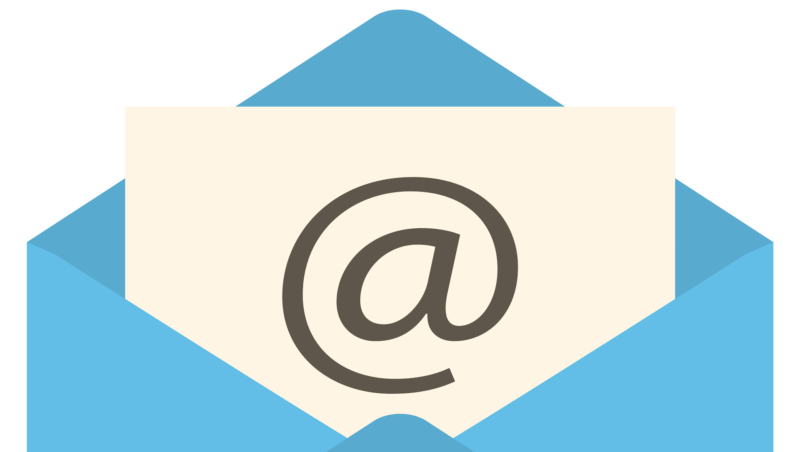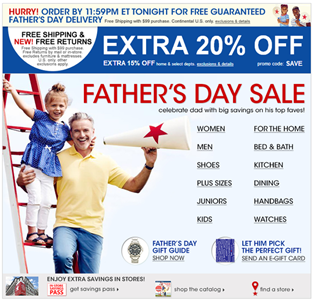7 Email Trends That Should Die In 2016
Looking to step up your email marketing this year? Columnist Tamar Weinberg discusses some outdated trends that you should immediately shelve if you want your email marketing to shine.

Forget what you knew about emails in 2015. This year is going to be a lot less forgiving. Today, with more and more people aiming to reach the coveted state of “inbox zero,” email marketers need to be well-equipped to make sure their messages actually get across to their intended audiences.
To help you in the process, below are seven email trends that you should remove from your email routine this year.
1. Sending Emails Without An Option To Unsubscribe
While it may seem counterproductive, the truth remains that you must leave options for email recipients to unsubscribe from your mailing list. You may not think of that email (and several follow-ups) from your salesperson as “email marketing” per se, but the recipient may still want to unsubscribe.
First, they may no longer be interested in your product or service offering, so constant email bombarding could hurt your reputation. You can’t expect to get more sales by forcing content or promotional offers upon users who don’t have any interest in them. If anything, it may cause them to call you out online.
Secondly, there is also the possibility that these recipients showed initial interest but did not have any real intent to move ahead in the sales funnel. Perhaps they just wanted to download a white paper or browse through a specific web page.
Either way, when considering the consequences of not including an unsubscribe button when sending out an e-newsletter, the choice is clear. In fact, in the US, organizations that violate the CAN-SPAM act by sending unsolicited messages can face penalties of up to $16,000 per violation/message. This means it’s paramount to honor opt-out messages as quickly as possible.
2. Cold Emails To Unknown Target Audiences
Email recipients in 2016 are less patient than the year before. This is directly related to the information overload era and the existence of other alternatives to grab attention.
Therefore, the practice of sending out cold emails to unknown target audiences is slowly becoming obsolete. Instead, email marketers today are using behavioral segmentation to target specific buyer profiles according to where they are in the sales funnel.
For instance, emails may be segmented to examine past purchase history or time spent on a specific product web page. In this way, marketers are better able to present segment-specific offers that have more potential to convert. Just remember, though, it’s still pretty important to follow CAN-SPAM, as well, and give people a means of opting out.
3. Spammy Subject Lines
You only have one chance to make a first impression. This is also very true when it comes to emails.
Often, the subject line takes precedence over the name of the sender and is the first point in the email the eyes are drawn to. The subject line is basically your initial pitch to get readers to open and actually read through your content.
In 2016, email marketers need to carefully choose their subject lines in order to reduce any spam-like inclinations. With so many trying to achieve inbox zero, many potential recipients are deleting emails with spammy-sounding subject lines, which negatively affects your CTR (click-through rate) and overall conversion rates.
Look over this list of words that trigger the email spam alarm for some insights before you begin typing.
4. Overwhelming Email Signatures
So you have a fabulous product, and you are an amazing entrepreneur. Great.
But that doesn’t mean you should include every possible way of contacting you and links to numerous online mentions and prizes in your email signature. Make sure not to overwhelm your readers, who just want to be able to easily reach out if they have any questions or comments.
By adding too many graphics and too much content in your signature toward the end of your email, you can deter readers from internalizing the actual message displayed in your email. Check out tools such as Wisestamp or NewOldStamp to generate your email signature and test out a few options.
5. Unresponsive Emails
Sending emails that are not based on responsive design is a thing of the past. If you still insist on disregarding the power of responsive design, consider the fact that mobile email use is increasing, with about 50 percent of email being opened on a mobile device.
This has major implications for the way we even begin to strategize email design.
As such, marketers should consider (from the early onset) how messaging is displayed across smaller devices, from smartphones to tablets. Using a tool such as GetResponse that incorporates a responsive email design feature is a great starting point, as users can apply A/B testing to specific campaigns and check the responsiveness of their email marketing campaigns.
6. Sending Emails Without Tracking Performance
An old adage is that you can’t manage what you don’t measure. The same goes for measuring the success or failure of your email marketing campaigns.
2016 is poised to become a data-hungry year, one in which companies will need to provide concrete results and data-based decisions in order to stay competitive.
Email marketers should consider using email tracking software such as Tout to stay ahead of email conversations and learn where and what needs to be fine-tuned to ascertain whether the problem stems from an issue of specific template choice, timing of the email or additional factors.
7. Multiple Calls To Action
The average email user receives dozens of emails on a daily basis. This includes direct work-related emails, fairly consistent offers and spammy messages.
As such, email marketers should be cautious when sending out emails with too many different calls to action. Recipients exposed to such emails are often so overwhelmed with mixed messaging and promotions that they fail to stay in the sales funnel.
The example below is what not to do this year:

Consider staying more focused with direct and clear messaging to help ease your email recipient toward the next stage of the buying process.
We’ve already seen email marketing predictions for 2016. But to further improve our email marketing, outdated habits must be retired for maximum effectiveness.
To succeed in 2016, emails will need to be segmented, concise, data-based and measured for performance, designed for responsiveness and highly focused, with direct calls to action to move recipients further along in the sales funnel. Here’s to a year of many more conversions and lower bounce rates!
Contributing authors are invited to create content for MarTech and are chosen for their expertise and contribution to the search community. Our contributors work under the oversight of the editorial staff and contributions are checked for quality and relevance to our readers. MarTech is owned by Semrush. Contributor was not asked to make any direct or indirect mentions of Semrush. The opinions they express are their own.
Related stories